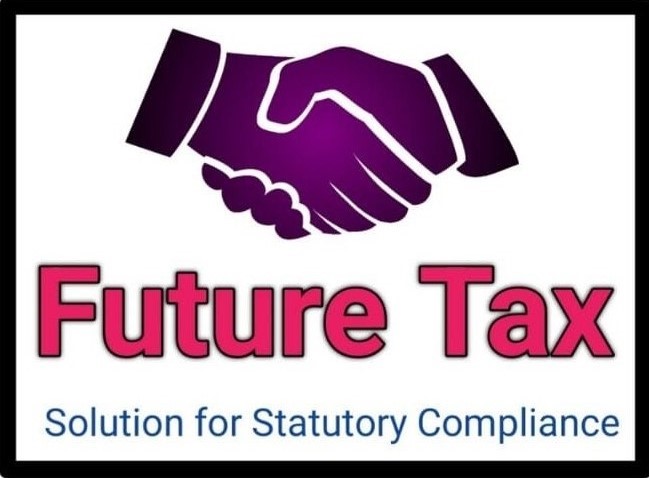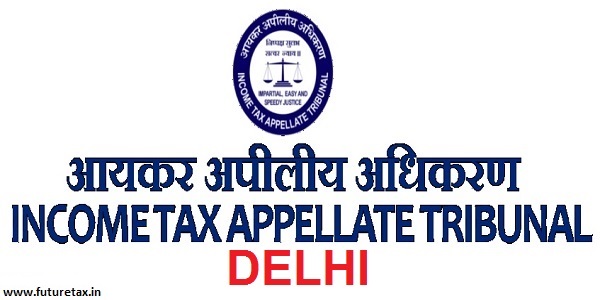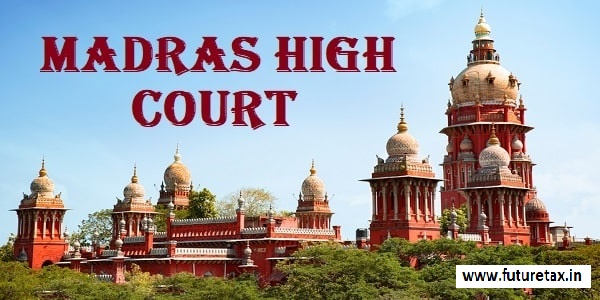
Govt constitutes Special Interest Group (SIG) on Domain Names and Numbers in Tamil
- Tamil Tax upate News
- January 8, 2025
- No Comment
- 316
- 22 minutes read
Ministry of Electronics and Information Technology (MeitY), Government of India, has constituted a Special Interest Group (SIG) on Domain Names and Numbers to foster a unified and collaborative framework for internet governance in India. This initiative aims to enhance India’s global engagement and strengthen national capacities in areas like IDN adoption, ccTLD and gTLD governance, DNS privacy, IPv6 resource management, and blockchain innovations. The SIG will connect the government with domestic stakeholders from academia, industry, civil society, and technical communities, facilitating a two-way exchange of insights to align policies with stakeholder needs. Comprising experts from diverse domains, the SIG will also work to position India as a leader in international forums like ICANN and APNIC. The group will operate under the guidance of a High-Level Governing Council (HLGC) and will focus on capacity building, policy influence, and multistakeholder engagement. The SIG will ensure meaningful participation in shaping policies and technical discussions while driving India’s leadership in the global digital ecosystem. Key deliverables include research outputs, quarterly reports, and international engagement in technical standard-setting bodies. This initiative marks a significant step towards a sustainable and inclusive internet governance framework for India.
Government of India
Ministry of Electronics & Information Technology
Electronics Niketan, 6, C G 0 Complex, New Delhi-110003
Website: www.meity.gov.in
No. L-12014/12/2021-IGD Date: 06/01/2025
Subject: Constitution of Special Interest Group (SIG) on Domain Names and Numbers
To establish a unified, collaborative, inclusive, and sustainable framework for Internet Governance in India which strengthens national capacity, promotes India’s interests globally, and ensures meaningful participation of all national stakeholders in the evolving global digital ecosystem, I am directed to convey the constitution of the thematic Special Interest Group (SIG) on Domain Names and Numbers.
2. It will serve as a vital link connecting the Government with domestic stakeholders, fostering a two-way flow of information, insights, and feedback with an aim to align government policies with the needs and perspectives of various stakeholder groups, including academia, industry, civil society, and technical communities.
3. The Special Interest Group on Domain Names and Numbers (SIG-DNN) will address critical issues inter alia on areas like IDN adoption for multilingual accessibility, ccTLD and gTLD governance, DNS privacy (DoH, DoT, DNSSEC), IPv6 and ASN resource management, and blockchain innovations in domain ownership, etc. The SIG will aim to position India as a leader in Internet governance in forums such as ICANN and APNIC.
4. The following are the composition of SIG on Domain Names and Numbers (SIG-DNN):
i. Dr. Govind, Ex-CEO NIXI, Co-founder of InSIG Member
ii. Mr. Satish Babu, Director of InApp, Chair APRALO at ICANN Member
iii. Mr. Amrita Choudhury, Director CCAOI, Chair AprIGF Member
iv. Dr. Ajay Data, Founder and CEO, XgenPlus & Chair NeoBhrami Member Generation Panel, ICANN
v. Mr. Amitabh Singhal, ICANN Board Member Member
vi. Mr. Mahesh Kulkarni Founder CTO, EVARIS Systems LLP, ex-Sr. Member Director CDAC, ex-W3C India Office country manager
vi. Mr. Neha Gupta, Scientist ‘E’, CDAC, Pune Member
viii. Mr. Vinay Murarka, Founder, V2Technosys Member
xi. Mr. Vikas Saraswat, Partner, Saraswat & Co., Advocates & IP Member Attorneys
x. Mr. Brajesh Jain, Ex-President, Spectranet Member
xi. Mr. Anurag Bhatia, Network Researcher, Hurricane Electric Member
xii. Mr. Ajay Kumar Tripathi, CIO at D E CIX and Former Manager, Member NIXI
xiii. Mr. R S Perhar, President Netputs Broadband Member
xiv. Mr. Pankaj Chaturvedi, VP- Special Projects Light storm Telecom Member Ventures and Treasurer, ISPAI
xv. Mr. Tarun Chitkara, VP, Regulatory Affairs Bharti Airtel Member
xvi. Mr. Venkat Ramanan, Director, World Phone Internet Services Member Private Limited
xvii. Mr. Hariharan, Scientist `D’, NIC Member
5. The detailed Terms of Reference (ToR) and Governance Structure of the SIG are enclosed herewith.
6. This issues with the approval of Secretary, MeitY.
(Dheeraj)
Scientist ‘C’
Email: dheeraj.rajput@gov.in
To,
The Members of Special Interest Group (SIG) on Domain Names and Numbers
Terms of Reference (ToR) for the Special Interest Groups (SIGs) and Governance Structure
The following Terms of Reference (ToR) shall apply to all the SIGs constituted under this framework. The purpose, key areas of focus and proposed names for each SIGs are mentioned in separate annexures to this document.
1. Mission Statement
To establish a unified, collaborative, inclusive, and sustainable framework for Internet Governance in India that strengthens national capacity, promotes India’s interests globally, and ensures meaningful participation of all stakeholders in the evolving digital ecosystem.
2. Purpose
The Special Interest Groups are designed to:
i. Act as a vital link connecting the government with domestic stakeholders, fostering a two-way flow of information, insights, and feedback with an aim to align government policies with the needs and perspectives of various stakeholder groups, including academia, industry, civil society, and technical communities.
ii. Ensure that domestic stakeholders are meaningfully engaged in shaping policy and technical discussions and positions, while also enabling the government to communicate priorities, build consensus, and mobilize support for national and global initiatives in global internet governance landscape.
iii. Enhance capacity-building in technical and policy domains to support India’s leadership in global internet governance.
iv. Drive discussions and initiatives in thematic areas, with autonomy to adapt focus areas as required.
v. Facilitate the exchange of best practices and foster multistakeholder collaborations.
vi. Ensure effective and meaningful participation of Indian representatives and organizations in international forums and policy discussions.
3. High-Level Governing Council (HLGC)
HLGC will be chaired by JS, IGD MeitY with CEO, NIXI, as its vice-chair and Scientist F, MeitY as the member secretary and Chairs of the 3 SIGs as its members. It will also act as a nodal body responsible to oversee, promote and support the mechanism outputs.
The HLGC will play a crucial role in overseeing, guiding and supporting the Special Interest Groups (SIGs) by initially recommending the Members for each SIG. It will also act as a nodal body responsible for adopting and supporting the outputs of the SIGs. This approach will ensure that the SIGs receive the necessary direction and expertise from the outset, laying a strong foundation for their effective functioning and thematic focus. The HLGC will also periodically review the progress of the SIGs to align their activities with broader Internet governance objectives as enshrined in this Governance Framework. Nominations of the Chair/ Vice Chair and periodic nominations of the Members for each SIG shall be made by the respective SIG.
4. Special Interest Groups
SIGs will comprise of Chair, Vice Chair and core committee members, who will be responsible for collective functioning of the SIGs.
5. Secretariat
A dedicated Secretariat will be set up to facilitate the day-to-day functioning of the SIGs. This Secretariat will give support for efficient coordination across various levels and activities of the mechanism.
6. Thematic Areas of SIGs: There will be three distinct SIGs that will be constituted initially for the following themes:
I. Domain Names and Numbers
II. Internet Protocols & Standards
III. Future of Internet
This list represents the initial set of themes, and based on the inputs of stakeholders, the themes may be expanded in the future to include other relevant areas as the need arises, ensuring it stays aligned with evolving technological and policy developments.
7. Membership
Each Special Interest Group will comprise of the members initially nominated by the HLGC. The Chair and Vice Chair shall be elected from amongst the members.
i. Chair: The Chair will be the highest-level officer of the SIG. It will be the chair’s duty to preside over meetings of the group and to ensure that the SIG conducts its business in consonance with the purpose, key areas of focus, and expected outputs/ goals specified in the terms of reference.
ii. Vice Chair: The Vice Chair shall assume the duties of the chair in his/ her absence and act as the second highest officer of the group.
iii. Member participants: Each SIG will be composed of 20-30 members (flexibility based on the requirement of Group) inducted on a voluntary basis. In addition to the initially nominated members by the HLGC, members may be periodically inducted by the respective SIG with the approval of the Chair on a need basis. The members will be responsible for driving discussions and research on policy development, build capacities and identify challenges and opportunities within their respective areas of expertise. To ensure focused and effective participation, a member can be part of a maximum of two Special Interest Groups (SIGs) at any given time. This restriction is intended to promote meaningful engagement and allow members to contribute deeply to their areas of expertise.
8. Duration of Terms
The Chair and vice chair elected by the members serve for a term of three years, renewable once subject to the candidate serving a cooling period of 2 years between two terms. There shall be no cap on the terms of the members who will voluntarily accept memberships of the SIGs.
9. Funding:
Funding of administrative expenses of the SIGs shall be borne by NIXI. The modalities of the eligible expenses, including the exact nature and limits of reimbursement, shall remain open for further discussion and development. NIXI may review and finalize the modalities as per future requirements, ensuring that evolving needs which will be accommodated in future. Voluntary financial contributions from the multistakeholder community to support the SIGs’ activities, including research, capacity building, events, outreach, and other initiatives that align with MeitY’s strategic objectives may also be explored in future.
10. Group Procedures
i. The SIG meetings will be held under the ‘Chatham House Rule’ and follow pre-approved agendas approved by the Chair prior to each meeting. All SIG meetings, virtual or otherwise, will be open to observers unless stated otherwise. All member participants and the thematic Chair/ Vice Chair will collaborate on decision-making, strategy development, and ensuring the delivery of key outputs and recommendations. Decisions will be made collectively, ensuring balanced input from all stakeholders.
ii. Modes of conducting meeting: The SIG will convene officially at least once a month virtually and may schedule additional virtual meetings, if required at the discretion of the Chair/ Vice Chair. Additionally, a physical meeting may be conducted annually and at the end of every quarter to enhance collaboration and in-depth discussion. When an event relevant to the SIG is anticipated, multiple preparatory meetings may be arranged either online or physically at the discretion of the group. Continuous discussion and planning will occur throughout the year via virtual channels, as needed.
iii. Meeting Location: Monthly SIG meetings will be held virtually unless the Chair decides otherwise to conduct a session in hybrid or physical format. For physical meetings, the Chair or Vice Chair, in consultation with members, will determine the location in advance.
iv. Quorum: A quorum shall be constituted by more than 50% of the total members, including the Chair and Vice Chair. In the absence of both, a temporary presiding officer may be designated from the attendees to facilitate the meeting.
11. Timelines and Deliverables
Upon formation, the Chair of the SIG shall formulate timelines for key outputs such as Quarterly Reports; Initial stakeholder consultations; Report on outcomes and recommendations and/ or Policy Recommendations to the HLGC; Research Papers and Consultation Papers, and any other item as deemed fit.
12. Repository for Content and Status
The Secretariat will maintain an online repository to store all research outputs of the SIG, meeting minutes, reports, and policy recommendations. The repository will be accessible to SIG members, stakeholders, and the public (for select documents) to ensure transparency and engagement.
13. Expected Outputs and Goals
i. Policy Influence and International Engagement: Follow the deliberations and discussion in global internet governance and technical standard-setting bodies like the IETF; ICANN and forums within ICANN such as the APNIC, SSAC, GNSO, ccNSO, etc; IGF, WSIS and W3C and advice/ support/ contribute to the Government towards India’s active participation and leadership in such global internet governance and technical standard-setting bodies.
ii. Capacity Building: Conceptualize workshops and training sessions for students and young professionals on the related area.
iii. Public Consultation and Multistakeholder Engagement: Foster long-term multistakeholder partnerships between government, private sector, academia, civil society and other stakeholders through public consultations, round table conferences or workshops to address the challenges and opportunities in the respective areas of focus of the SIG.
iv. Conceptualization of Projects including research, studies and monitoring the projects which will complement the Technical and Policy influence in Internet Governance.
v. Reports: Deliver the quarterly report, report on outcomes and recommendations and/ or Policy Recommendations and positions to the HLGC.
vi. Repository Launch: Initiate the Launch of the online repository.
14. Review Process
Periodic reviews will be carried out annually by the HLGC to ensure that the SIGs remain aligned with its objectives and that deliverables are being met.
15. Amendments to the Framework
Any amendments to this Governance Framework can be proposed by a SIG and must be approved by the HLGC. Amendments may be incorporated to keep the Framework relevant and aligned with emerging global trends in Internet Governance.
Annexure 1A: Special Interest Group (SIG) on “Domain Names and Numbers”
1. Purpose:
The Special Interest Group on Domain Names and Numbers (SIG-DNN) is established to address critical technical and policy issues related to the governance, management and security of the Domain Name System (DNS) and Internet Number Resources. This includes DNS query authentication and privacy, Internationalized Domain Names (IDNs), Country Code Top-Level Domains (ccTLDs), Generic Top-Level Domains (gTLDs), the allocation of Internet Protocol (IP) addresses (IPv4, IPv6), Autonomous System Numbers (ASNs). The SIG will also focus on research on latest trends in DNS security, routing security, and advanced internet security protocols, assessing security frameworks, promoting secure practices, and providing policy guidelines to protect internet infrastructure. The above list is indicative in nature and it will be at the liberty of the respective SIG to include additional areas of interest as deemed necessary.
The SIG aims to provide a collaborative platform for discussing emerging trends, challenges, and opportunities in DNS and IP resource governance. It seeks to support and contribute to India’s active participation and leadership in global Internet governance forums such as ICANN, Asia Pacific Network Information Centre (APNIC) and the Internet Assigned Numbers Authority (IANA). Additionally, it will foster Universal Acceptance (UA) compliance and promote the adoption of IDNs, while also engaging in IPv6 adoption and number resource management.
The SIG will contribute to policy development through research, capacity building, and stakeholder collaboration to position India as a unified voice in Internet governance and ensure the secure and sustainable growth of the Internet ecosystem.
2. Key Areas of Focus:
Upon its constitution, the SIG under the leadership of the Chair or in his/ her absence the Vice Chair formalize its key areas of focus. The following indicative list of subjects/ topics may form the key areas of focus:
Domain Names and Internet Number Resources:
i. Privacy and Compliance in DNS Queries:
- Assess Privacy Challenges: Examine privacy risks in DNS queries, ensuring compliance with data protection frameworks.
- Advocate Privacy Standards: Support DNS privacy protocols like DNS over HTTPS (DoH) and DNS over TLS (DoT).
- Explore key areas in internet security impacting DNS like routing security through protocols like DNSSEC, RPKI, and encrypted DNS (DoH and DoT) to safeguard against vulnerabilities. It will promote Transport Layer Security (TLS) and encrypted protocols to secure data in transit, evaluate the role of AI and ML in detecting cyber threats, and address risks from domain generation algorithms (DGAs) used in malware. Additionally, the SIG will develop resilience strategies against cyber threats, focus on secure cross-border data transfers, assess encryption standards in light of emerging threats like quantum computing, and build public awareness and capacity in internet security best practices.
ii. Internationalized Domain Names (IDNs):
- IDN Adoption: Promote the use of IDNs to enhance linguistic diversity and Internet accessibility.
- Multilingual Content Development: Encourage creating localized content in Indian languages.
- Global Collaboration: Engage with ICANN and UASG to address IDN related technical and policy issues.
iii. Country Code Top-Level Domains (ccTLDs):
- Governance Review: Ensure ccTLD governance meets security and transparency standards.
- Best Practices: Facilitate ccTLD management aligned with local community needs and national policies.
iv. . Generic Top-Level Domains (gTLDs):
- Governance Frameworks: Assess frameworks for gTLD governance, including new gTLD program, Applicant Support Program, DNS Abuse, RDRS, WHOIS Data accuracy, trademark protection, and domain dispute resolution.
- gTLD Expansion: Investigate the impact of gTLD expansion on global governance, including domain disputes.
v. Blockchain and Web3 in Domain Name Innovation:
- Decentralized Ownership: Explore blockchain for transparent domain ownership.
- Digital Identity: Assess blockchain-based domain name identity solutions.
- Web3 Integration: Assess interoperability between DNS and Web3 platforms.
- Community-driven Governance: Evaluate the role of DAOs in decentralized governance.
vi. IPv4 and IPv6 Resource Management:
- Equitable Distribution: Manage remaining IPv4 resources and promote IPv6 adoption for sustainability.
- Capacity Building: Train stakeholders on resource management and IPv6 implementation.
vii. Autonomous System Numbers (ASNs):
- Routing Management: Promote awareness and best practices for ASNs to support efficient routing and multi-homing.
viii. Collaboration with APNIC and IANA:
- Active Participation: Engage with APNIC and IANA for equitable resource allocation and governance.
ix. Government Policy Alignment:
- Policy Support: Work with government agencies to align Indian policies with global standards.
x. Any Other Areas of Focus:
- As deemed fit by the group.
******




